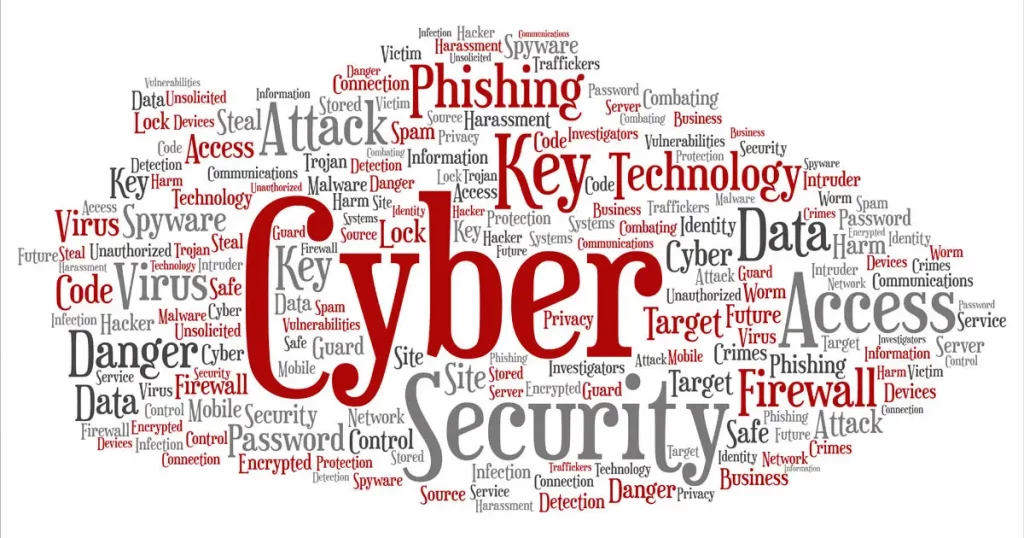Cybersecurity is about safeguarding and protecting your computer or your mobile phone systems from unwanted or unauthorized access or misuse. The process includes a lot of techniques and skills. Having in-depth knowledge of the working patterns and parameters may be a necessity for the cybersecurity specialist, but having a basic idea of the know-how for a common individual is always advised.
Thus said, in today’s very expanding digital world, cybersecurity is no longer only an IT concern- it should be everyone’s responsibility. Having said that , for every individual, understanding basic cybersecurity terminology can help protect oneself from digital threats.

Knowledge in Cybersecurity Matters in Today’s World
As individuals and businesses expand, they must enter the digital world, where each of us in every domain has become digitally dependent. IT security has emerged for the better. It has become an essential, non-negotiable one. With the rise of remote work and other digital services, cloud computing security has taken center stage. From safeguarding sensitive information to making sure about system availability, present-day organizations are investing in seeking cybersecurity frameworks.
Meanwhile, many professionals are pursuing Cybersecurity Degrees to challenge themselves in being a part of the ever-growing cybersecurity world. As a matter of fact, it helps them lay a strong foundation in areas like ethical hacking, network defense, and threat intelligence.
So, let’s learn and understand the top 20 cybersecurity terms you should know.
Top 20 Cybersecurity Terms – You Must Know
1. Malware – It’s a short form for malicious software. In cybersecurity, malware refers to any software that is designed intentionally to cause damage or error, or disturbance to the computer network or server. It’s the digital enemy. Viruses, worms, spyware, trojans, and ransomware are a few examples.
2. Phishing- Basically, it is like bait to trick users. In cybersecurity, phishing is considered a cyber-attack where attackers disguise themselves as entities that are trustworthy and steal their personal information, usually through fake websites and emails, and these days even through phone calls.
Being responsible and looking out for these kinds of tricks is advised. Watch out for suspicious links and an urgent tone in emails.
3. Encryption – The process of having your data converted into a coded form to ensure privacy and safety is encryption. Cybersecurity’s focus is to lock your data, ensure privacy, and protect your data. A secret code.
4. Firewall – It is the first line of defense. A firewall acts as a barrier between your network and other harmful outside networks. It filters protect traffic based on security rules, blocking unauthorized access. If we have to put it across in a different way, think of it as a security guard who screens visitors before entering.
5. Virtual private network – VPN mantels your IP address and secures data. Every network has an IP address. A VPN allows sending and receiving data across different shared or public platforms. It follows the concept of private surfing.
6. Ransomware – Talking in layman’s terms, in cybersecurity, ransomware is like paying to regain access without assurance of file recovery. It’s a type of malware that locks or encrypts files on your system and demands payment, usually in cryptocurrency, to restore access.
A Few More Terms For You
7. Two-factor authentication – This feature is meant for Information Security, and requires two types of credentials to verify your identity, the ones that we most of the time see on Google while changing passwords. Ideally, a password and a code are sent to your phone 2FA or a double-layer protection.
8. Botnet – A botnet is a network of computers infected with malware and controlled by an attacker, often used to perform large-scale attacks like Distributed Denial of Service.
9. Social Engineering – A kind of human hacking, unlike technical and ethical ways of hacking, social engineering tries to manipulate people into giving their confidential information. An example could be a caller pretending to be a support professional from the cybersecurity tech team and asking for your login credentials.
10. Data breach – Whenever any confidential information is accessed, stolen, or disclosed without authorization, there is a data breach. Data escaping from the end user.
11. End user – This individual is like the main person who is the user and makes sure that the network or system is always protected. Any individual using the computer application or system, or network, is referred to as an End user
12. Antivirus – You can term it a cybersecurity health check. Antivirus is a software program that is designed to find out errors, detect, prevent, and remove malware from your computer or device.
13. Dark web – A dark web is often anonymous; it is accessible through specific software only, and it hosts a lot of hidden services.
Let’s Consider Some More Terms
14. Spoofing – this means disguising oneself as someone else, something malicious, and pretending that it comes from a legitimate source. It tricks recipients into trusting them and responding. Email spoofing is one of the examples. This happens when the hacker changes the IP address in such a way that it seems to come from a trusted source.
15. Ethical hacking – White hat hacking. It’s a process of legally getting into the system to identify vulnerabilities before the malicious hackers can disturb or exploit them., Good hacking or hacking for the right reason
16. Authentication- We have all come across this word umpteen times. Authenticating that we are who we are, the rightful owner, involves verifying the identity of the user and ensuring authorized access.
17. Cyber hygiene – These can also be termed as digital good habits. The practices and steps that organizations and individual users take to maintain system health and improve security are cyber hygiene. Regular updates, strong passwords, backing up data, and cautious online behavior are the key criteria.
18. Cyber threat intelligence – it’s the process of gathering and analyzing information about current attacks that threaten the security of the organization. The purpose of CTI is to predict, prevent, and respond to cyber threats effectively.
19. Spyware – A type of malware that secretly monitors the activity of users and collects information from them, but without their consent.
20. Insider Threat – the enemy within. A threat that stems from within the organization can come from employees, partners, etc., intentionally or unintentionally.
Important to Know These Terms – WHY?
Cybersecurity may seem complex, but it’s more about being informed, alert, and proactive.
In cybersecurity, understanding the terms and the language helps to :
- Make wiser and smarter decisions
- Protects your sensitive data.
- Recognize threats
- Mostly easier and effective in communicating with IT professionals.
Become an Expert in Cybersecurity With Henry Harvin Cybersecurity Course

Are you looking to upskill yourself with a course that helps you in the field of cybersecurity? Then don’t hesitate to consider Henry Harvin’s cybersecurity courses that they offer. They have legitimate and certified courses in various domains. The institute’s school of cybersecurity is one of the highest-ranking schools. They offer over 25+ certifications, degree programs, and diplomas.
A few courses to name are –
- Certified Network Defender Course
- Certified Information Manager Course
- CCISO and more
Explicitly, these courses can be taken up by professionals, students who want to pursue a career in cybersecurity, or others. The prices are affordable, and you can also avail of a one-year gold membership with them.
To mention a few benefits –
- Ability to create and manage a network system
- Opens the door for a growth opportunity
- Prepares you for decision-making roles.
- Community access
- Internship opportunities
- Strong foundation in specialized roles.
All things considered, Henry Harvin helps you every time with the support services, be it on-call or on the portal. The certificates that they award are accepted across and have their value. All in all, more elaborate information can be found on their website.
To conclude
In today’s digitally connected world, cybersecurity is a necessity, not a luxury. The digital threats and hackers are seamlessly increasing, and so, as individuals, one must also evolve. A basic step is to understand the terms of cybersecurity.
Accordingly, these 20 terms of cybersecurity will help in creating a strong cyber awareness and make you seem like a pro, not a novice. After going through this blog, you would be familiar with a few concepts of cybersecurity and would also be able to pass on the learnings to others.
Therefore, the next time you hear whaling, spoofing, or data breach, you are sure to grasp that these are cybersecurity terms. You will not only understand what they mean, but you will be able to respond accordingly.
Be on the digital platform, and stay safe, stay secure!
Recommended Reads
- Unlocking Career Opportunities: The True Cost Of Cyber Security Courses In Dubai
- Top 10 Cyber Security Courses in UAE
- Top 10 Entry-Level Cybersecurity Jobs
- Mastering Cybersecurity: A Comprehensive Guide to Certified Network Defender Courses
- How to Choose the Best Cyber Security Course in UAE?
FAQ’s
Ans: IT security focuses on the hardware and software of the computer, while cybersecurity is a subset of IT security focusing only on protecting data, systems, and networks.
Ans: Yes, it helps recognize threats and understand safeguarding methods, also keeps you updated about the happenings around us on a digital platform.
Ans: Certainly yes, these degrees are highly valued. A degree in cybersecurity furnishes you with skills that are in demand in the field of cybersecurity, like ethical hacking, network security, and more.
Ans: It is a network security system that controls and monitors the network.
Ans: Not necessary, IT professionals implement and manage the security systems, but anyone from HR to students can learn about cybersecurity. It plays a crucial role in understanding and protecting information.
